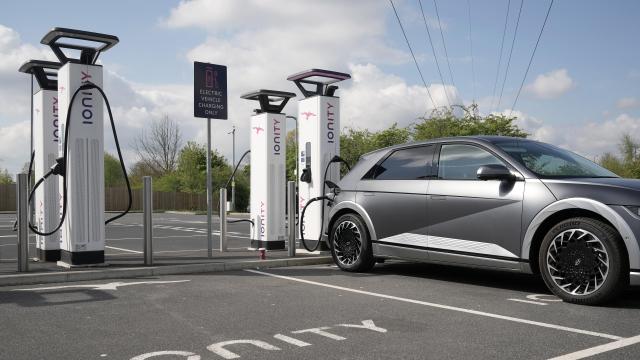The Biden administration’s plans to boost manufacturing of electric vehicles may face a big bump in the road — and that bump is made of graphite. Both E&E News and Marketplace reported this week on how the coming electric vehicle revolution will supercharge the demand for the mineral.
Graphite is a crucial component of electric vehicle batteries, used to make the anode — the part of the battery that releases electrons. When compared with other minerals used to make other parts of the battery, graphite is the single largest mineral component in a battery by weight.
China is currently the top graphite producer globally and is responsible for nearly 80% of the world’s graphite supply. The U.S., on the other hand, hasn’t produced graphite domestically in decades; currently, only 1.2% of the world’s supply is mined in North America, with some production in Canada and Mexico. But the world’s 70 mines are about to get a lot busier: Analysts predict that increased demand for graphite as electric vehicle production rises could add more than 300 new mines around the world by 2035.
The Biden administration has been trying to prop up the coming EV revolution and encourage American supply chains in the process. The Inflation Reduction Act contains tax credits for consumers to buy EVs — but there are stipulations to the materials that go into those EVs. By 2028, only EVs made with minerals mined or processed in the U.S. or in countries with a trade agreement with the U.S. will be eligible for those credits. Chinese graphite does not fit that criteria; the U.S. clearly needs to find new sources of graphite, and soon.
Creating a domestic graphite supply is easier said than done. There are currently only two sites in the U.S. that are being developed for graphite mining. One of those is in Alaska, on a remote peninsula off the coast, where locals have expressed concern about an open-pit mine’s impact on wildlife and natural resources. The other possible site is in Alabama, where the potential mine would sit on sensitive waterways.
There are other options, including creating synthetic graphite. Unfortunately, synthetic graphite’s main feedstock is fossil fuels — coal and oil — and the process comes with polluting tradeoffs: There’re significantly more air pollutants involved in synthetic graphite production, while some experts estimate that the CO2 emissions involved could be up to eight times higher for synthetic graphite versus natural.
Analysts project that we will need an enormous increase in various minerals and other materials, from lithium to cobalt to graphite, to meet the world’s clean energy needs over the next few decades. This increase in demand for all types of minerals comes with significant challenges, from labour issues to environmental problems.
Some say that the environmental tradeoffs of creating mines for graphite and other minerals in environmentally sensitive areas are outweighed by the benefits they provide to the energy transition. Others say that mining companies must be careful when working with local communities in places where they plan to extract resources.
Alex Trembath, the deputy director of think tank the Breakthrough Institute, which describes itself as “ecomodernist,” told E&E that minerals companies should “align the global interests with their localised interests.”
“We’re in for decades of sorting through fundamentally messy, difficult conflicts,” he said. “Asserting the climate hawk logic … is not the skeleton key to unlock those conflicts.”
